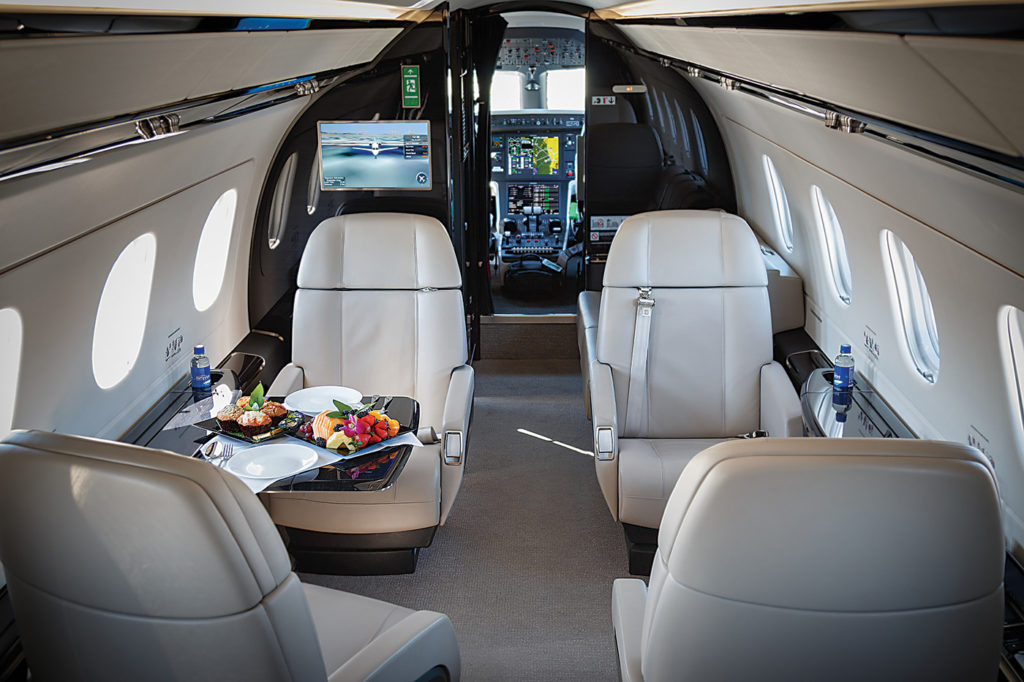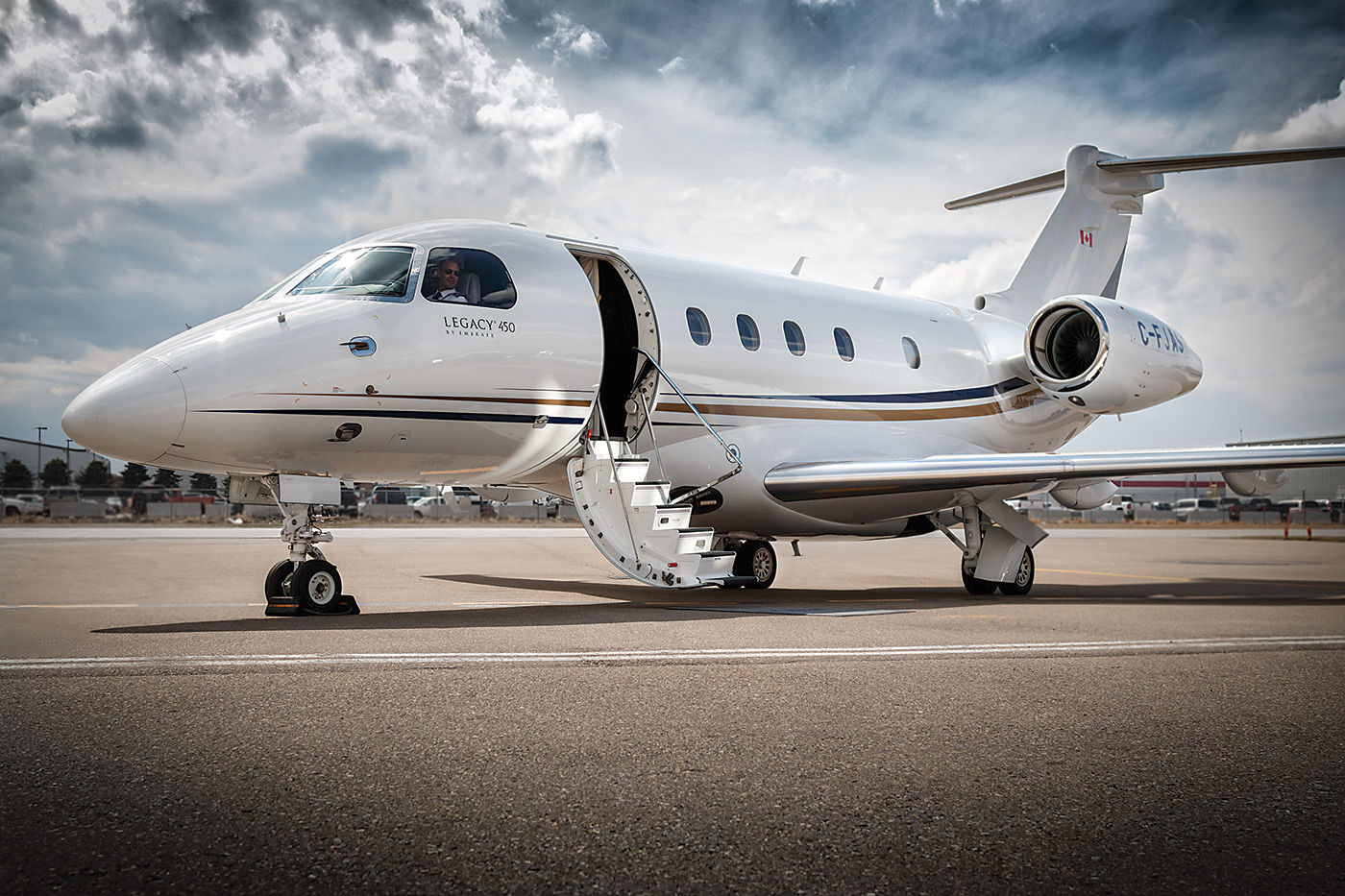Estimated reading time 6 minutes, 20 seconds.
Calgary entrepreneur and philanthropist Brett Wilson knows the value of time, and given his hectic schedule, fractional ownership of a private jet serves him well.
“To me, the economics can be compelling. You have to value your time,” said Wilson in an interview with Skies.
Wilson and a friend jointly have a one-quarter share in a jet with AirSprint Inc.’s fractional ownership plan, which allows people to buy a portion of a private plane. That system grants fractional owners the opportunity to book flights at hourly rates.

It is common for people to buy one-sixteenth or one-eighth ownership in a jet at AirSprint, but Wilson and his friend opted to combine to acquire the one-quarter interest.
“We put the quarter together to give us, frankly, operational flexibility,” said Wilson.
One of the attractions is a business jet’s ability to fly into smaller airports across North America. In Wilson’s case, that means flying into places in Saskatchewan such as North Battleford, Moose Jaw and Estevan or Fairmont, B.C.–to name just a few of the communities where he has booked time on a private jet.
He views business aviation as an important tool to help him co-ordinate a busy schedule.
Over the past decade, Wilson estimates that roughly 10 per cent of his flights have been on private jets. In a typical year, he travels on a plane about 100 times.
He emphasizes that in the vast majority of instances for flights between two major urban centres, it still makes sense to take commercial airlines.
“My short-haul is WestJet, my long-haul is Air Canada and my complicated is private jet. A little while ago, I had to go Regina-Estevan-Calgary all in 36 hours. I call that the complicated,” said Wilson.
Exceptions to the rule about flying between major cities on commercial airplanes arise from time to time. For instance, WestJet launched flights between Calgary and Nashville on May 4, but the service is limited to Thursdays and Sundays.

Wilson, a co-owner of the National Hockey League’s Nashville Predators, found that he needed the flexibility of the business jet to allow him to attend playoff games in Nashville.
“That was for the third and fourth round of the NHL playoffs. That justified–in my mind–complicated,” he said.
In some cases such as Wilson experienced, when a commercial route isn’t available during non-peak times, private jets are the backup plan. Before WestJet launched Calgary-Nashville non-stop service, consumers had to make a stopover at an American airport on a U.S. carrier.
Canada is well-served by Air Canada, WestJet and Porter Airlines on routes such as Toronto-Ottawa, while Air Canada and WestJet offer an array of flights for Vancouver-Toronto and other major city pairs.
“I use commercial a lot. It’s more the exception that I would fly private, regardless of the fact that I can afford it,” said Wilson. “When there are 10 flights a day to Toronto, I can’t imagine why I would need a private plane to go to Toronto. It’s only when commercial can’t do the job.”
In late 2008, the leaders of the Detroit Three automakers gave business aviation a black eye in failing to defend their use of private aircraft, jet industry officials say.
Wilson agrees. “They embarrassed themselves by not thoughtfully responding. The value of a CEO’s time to a company [could be] $500 or $5,000 an hour,” he said.
AirSprint, which introduced fractional ownership to Canada in 2000, weathered the 2008-09 recession and has grown over the years. Its planes are in demand, including the Embraer Legacy 450, Citation CJ2+ and CJ3+ jets that form the largest fractional fleet in the country.

“It’s rare that I go somewhere, even if I’m round-tripping, that the plane waits for me. It’s usually got somewhere else to go,” said Wilson, who shares an interest in an Embraer Legacy 450.
While he doesn’t have an equity stake in AirSprint as a company, he is a big fan of fractional ownership.
“The problems that I’ve had with AirSprint have been tiny and the solutions have been instant. They’ve saved my bacon a few times. The fractional concept works well for me,” said Wilson.
Major North American players in fractional ownership include NetJets and Flexjet.
In Canada, AirSprint president James Elian said the company has thrived with a diversified customer base, overcoming rough patches in Alberta’s oil industry.
“It has done quite well over the past couple of years. 2016 was actually our best year and we’re on track to beat it this year,” Elian said from the firm’s Calgary headquarters. “We started off with jets and turboprops and we’re now an all-jet fleet. We’re located right across the country. We have fractional owners from the Maritimes to Vancouver Island.”
AirSprint’s six equity owners include Elian, founder Judson Macor and vice-chairman Michael Knapp.
The current fleet consists of four Embraer Legacy 450s, seven CJs and one Cessna Citation XLS, though that XLS will be phased out in the fourth quarter of 2017, when one nine-seat Legacy 450 and one seven-seat CJ will be added.

“There is a lot of complexity to our operation and that’s why I say it’s a bit of a secret sauce. We make it work,” said Elian. He joined AirSprint in 2001 as a pilot and worked his way up through the ranks, becoming president in May 2015.
The Legacy 450 carries a purchase price of US$550,000 for a one-32nd share (25 hours of access annually). The fractional owner also pays $88,000 a year in AirSprint management fees and a rate of $3,800 for each occupied flying hour.
In recent years, AirSprint has fine-tuned its business model.
“The core of our business hasn’t really changed, but how we offer it and some of the flexibility has improved. One of the examples is the guaranteed access to one of the smaller airplanes,” said Elian. “And we’ve simplified the pricing. We offer an all-in pricing solution, whereas before there was a lot of itemization and it was more complex.”

